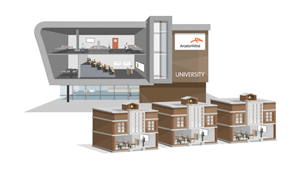The economy of tomorrow will rely on science, technology and engineering skills, but as the demand for these roles increases, it will get harder and harder to attract the very best.
Why is this important to us?
The skills associated with science, technology, engineering, and mathematics (STEM) are critical for sustainable development. Sectors like construction, automotive and our own industries of steel and mining all require top-quality engineers to develop more sustainable production methods, rethink the assumptions we make about how we use and re-use resources, and develop the technology for clean energy generation.
Our challenge

In Europe and North America, the average age of our employees ranges from 42 to 50. As this generation of European and North American steelworkers moves towards retirement, we risk losing the skills they have developed. There are fewer young people electing to study STEM subjects in these regions, which means a growing shortage of engineering talent for us to draw from. We need people with top-class STEM skills to generate the new ideas and products that will help us rise to the challenge of sustainable development.
Our action

We need to replenish our pool of engineers and technicians before the skills gap has a negative impact on our business. But we know this is a long-term issue, and we have to commit to it for the long term. In other words, we need to start while children are still at school, and inspire them with the idea of a future in science, technology or engineering. When they are older, we need to support them to develop careers based on the scientific, mechanical and electrical skills that our business needs.
Our potential to create value

Our size, geographical spread, and range of functions mean we have a lot to offer those wanting to develop skills in science and technology. And if we can find the right people with the right skills, we know we can contribute to a more sustainable future for everyone – not just by leading our industry in sustainability, but by designing products that deliver the same benefits but use fewer resources. We also see value in bringing more women into STEM-based careers, and this is a high priority for us and our industry.
